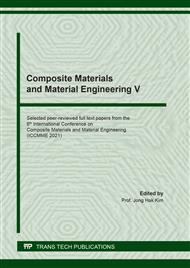p.98
p.107
p.112
p.123
p.129
p.135
p.147
p.153
p.163
Reinforcing Adhesives Using Carbon Nanotubes for the Carbon Fibre Reinforced Plastic Composite and Metal Joint
Abstract:
The usage of joints between composites and metals has gained significant importance in the recent years and it is the need of the industry that new and improved methods of joining the composites and metals be introduced. In this study, the joint between the carbon fibre reinforced plastic composite and the aluminium metal has been improved with the help of the multi walled carbon nanotubes to reinforce the epoxy adhesive. Knowledge of the interlaminar behaviour regarding the composites is very important as this is the most common type of failure faced by them. Furthermore, the best method for the uniform and fine dispersion of carbon nanotubes in the epoxy is also discussed. In this research, two different types of composite metal joint samples were tested using the mode 1 fracture toughness test to study the interlaminar behaviour of the reinforced epoxy and the double cantilever beam specimen was used to carry out the tests according to the ASTM standards.
Info:
Periodical:
Pages:
129-134
Citation:
Online since:
June 2021
Authors:
Price:
Сopyright:
© 2021 Trans Tech Publications Ltd. All Rights Reserved
Share:
Citation:


